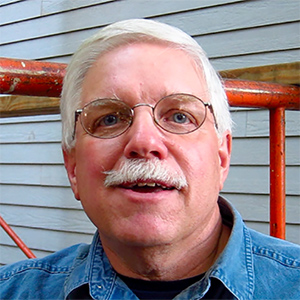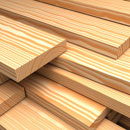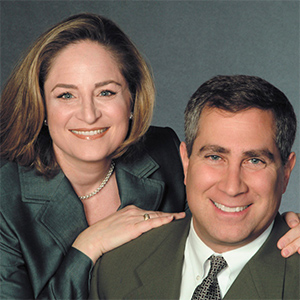Playground Artificial Turf Maintenance: Tips for Longevity
Published in Home Articles
Artificial turf has become a popular choice for playgrounds due to its durability and low maintenance needs. It allows children to play safely while also reducing the risk of injuries from falls. However, there are still some misconceptions about artificial turf that may deter parents and schools from choosing it for their playgrounds.
In this article, we will explore several tips for playground artificial turf maintenance to ensure its longevity and keep it looking good over time.
Understanding Artificial Turf
Artificial turf is made from synthetic fibers designed to mimic the appearance and feel of natural grass. It is commonly used in various settings, including sports fields, parks, and playgrounds. One of the main reasons for its popularity is its ability to withstand heavy foot traffic without the same wear and tear seen in natural grass.
However, like any surface, it requires proper care to perform at its best. Check out a provider of turf in North Las Vegas for more information on artificial turf installation and maintenance.
Basic Maintenance Practices
To keep your playground’s artificial turf in top condition, it is essential to establish a regular maintenance routine. This routine should include basic practices such as cleaning, brushing, and inspection. Regular maintenance helps remove debris, prevents the growth of moss and weeds, and keeps the surface safe for children to play.
Cleaning Your Turf
Cleaning is a critical starting point for maintenance. Regularly remove leaves, twigs, and other debris using a broom or rake. It is crucial to check for any litter that can cause harm to children.
For more stubborn stains, use a gentle soap and water mixture. Refrain from applying strong chemicals, which could harm the turf.
Brushing the Fibers
Brushing the fibers of the artificial turf helps to keep them upright and looking fresh. Use a stiff-bristled broom to gently brush the surface.
This process redistributes the infill material, ensuring an even surface and maintaining the look of the turf. Regular brushing also helps prevent matting.
Inspecting for Damage
Inspections should be a part of your maintenance schedule. Check the turf for signs of damage, such as fraying edges or areas where the infill has been displaced.
Early detection of wear and tear allows for timely repairs, which can save you time and money in the long run. If you notice any damaged seams or weak spots, take steps to repair them quickly.
Dealing With Weeds
Weeds can be a common issue with artificial turf, especially if the installation does not include a proper weed barrier. While the turf itself is resistant to weed growth, it’s essential to check for any that may sprout through seams or edges.
If necessary, use a safe herbicide designed for artificial grass. Manual removal can also be effective. Just be careful not to damage the turf.
Infill Maintenance
The infill material plays a crucial role in maintaining the integrity of the turf. Over time, the infill can become compacted or displaced due to use.
Regularly check the level of the infill and add more as needed to maintain an even playing surface. This is especially important in high-traffic areas where the fibers may be more likely to break down.
Drainage Management
Proper drainage is vital in maintaining artificial turf. Good drainage prevents water pooling, which can lead to mold and mildew. Ensure that the drainage system is functioning correctly and clear any obstructions that may block water flow. Periodically inspect the area around the turf for signs of poor drainage.
Protecting from Damage
To extend the life of your artificial turf, consider measures to protect it from potential damage. Avoid sharp objects near the turf.
Also, discourage children from using sleds or skateboards, as they can damage the surface. Consider placing mats in high-traffic areas or under equipment to reduce wear.
Seasonal Maintenance
As seasons change, so do your maintenance needs. In the fall, it’s essential to remove leaves and other debris that can accumulate and cause issues during winter.
In winter, check for snow buildup, as the weight of snow can snow damage the turf. In spring, a thorough inspection and cleaning can prepare the turf for the busy summer months.
Long-Term Care
Long-term maintenance will keep your artificial turf functional and attractive. Create a maintenance schedule. It should detail yearly tasks and inspections.
By being proactive, you can prevent more significant issues that require costly repairs.
Choosing Professional Help
Playground staff or volunteers can often do regular maintenance. But, there are times when hiring professionals may be necessary.
If your turf needs major cleaning or repairs, get a professional. They will do the job right. Professionals often have the right equipment and knowledge to take care of specific issues.
Benefits of Artificial Turf Maintenance
Regular maintenance of artificial turf extends its life. It also makes playgrounds safer and more enjoyable. A key benefit is injury prevention.
A smooth, consistent surface reduces trip and fall risks. Also, well-kept turf looks better. It invites children and families.
A clean surface protects children from health risks. Debris or stagnant water can harbor bacteria.
Moreover, artificial turf that receives proper care is more environmentally friendly. Artificial turf supports sustainability. It cuts the need for watering, mowing, and chemical fertilizers or pesticides in natural grass maintenance.
This conservation of resources contributes to a greener future while allowing children to enjoy a safe play space. Regular maintenance routines also foster community involvement.
Playground staff and families can help keep the area clean and safe for children. This promotes a sense of ownership and pride in their local playground.
Key Takeaways for Playground Artificial Turf Maintenance
Maintaining artificial turf is essential to ensuring a safe and enjoyable playground environment for children. Following the tips outlined in this article, such as cleaning regularly, brushing the fibers, inspecting for damage, managing weeds, maintaining infill, ensuring proper drainage, and protecting against damage, can help extend the life of your turf.
With consistent care, your artificial turf can remain a safe, vibrant surface for many years, providing endless joy to children at play. For more topics aside from playground artificial turf maintenance, visit our blog!





























Comments